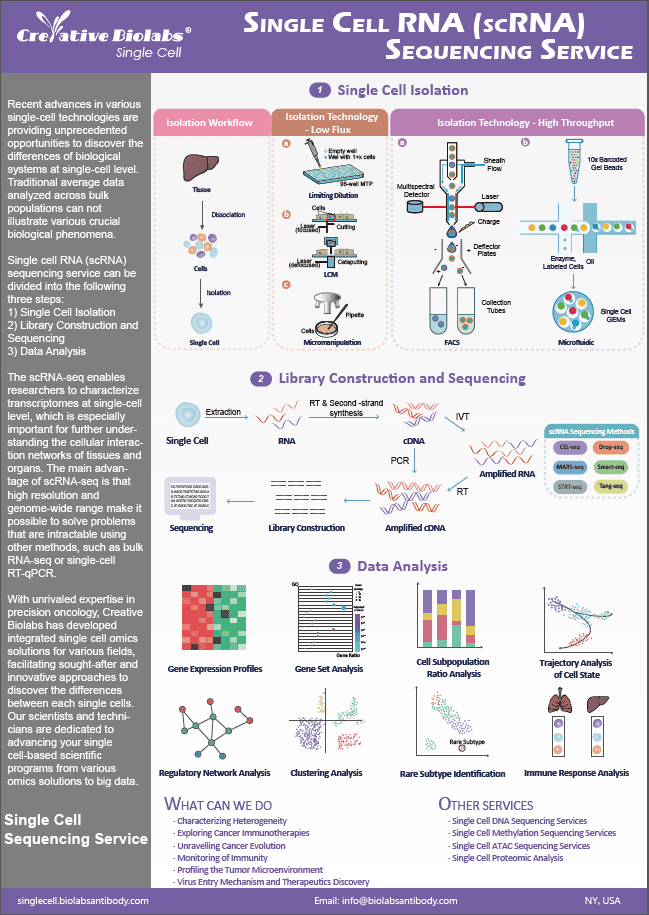Cancer Stem Cell Model
Tumor Evolution
Immune dysfunction, which is caused by the interaction of genetic factors and acquired environmental factors like a viral infection, keeps the body in a state of chronic, uncontrolled inflammation contributing to cancer growth and spread. This is called "mutation-selection-adaptation," and it happens as the tumor changes and grows. Also, the way tumors change will lead to the harmful effects of drug resistance transfer, so it is very important to understand how tumors change in order to develop better therapies in the clinic.
In the past, there have been two main approaches to explain how tumors grow: the stochastic clonal evolution model and the cancer stem cell (CSC) theory. In the stochastic clonal evolution model, each cell can be tumorigenic and keep the growth of the tumor going. In the cancer stem cell (CSC) theory, the tumor is organized in a hierarchy, and a subpopulation of cells keeps the growth going.
Defining Stemness
To understand how cancer stem cells work, we need to know what makes normal stem cells different. A normal adult stem cell is a somatic cell that can divide many times and can give rise to both more stem cells and cells that specialize into other types of cells. Usually, the main jobs of a normal stem cell to do are: self-renew (for example, make more stem cells) and differentiate.
Cancer Stem Cells Model
Malignant tumors start in tissues with a cellular hierarchy made up of stem cells that live for a long time and keep dividing into progenitor cells and mature cells that only live for a short time. Self-renewal is a type of cell division that both healthy cells and at least some cancer cells do.
The cancer stem theory says that a small group of cancer cells are the only ones that can make a tumor grow and spread. Also, these cancer stem cells can give rise to cancer cells that are more differentiated and will stop multiplying or die because they can't go through mitosis anymore or can't do it at all. So, the cancer stem cell theory says that some parts of the normal cellular hierarchy are still present in many tumors.
There are two possible ways in which cancer stem cells can arise.
- Normal stem cells may serve as a source of cancer stem cells. Because leukemic cells are capable of differentiating into multiple mature cell lineages and the stem cells in acute leukemia share the expression of certain markers with normal stem cells. It was originally hypothesized that cancer stem cells arose from normal stem cells. However, this model suggests that mutations permit the uncontrolled expansion of cancer stem cells derived from normal stem cells.
- On the other hand, cancer stem cells develop from progenitor cells. Based on the discovery of new markers that enable the identification of progenitor cells capable of differentiating into mature blood cells but lacking the ability to self-renew, more recent evidence suggests that in many cancers, cancer stem cells arise from progenitor cells that have acquired the ability to self-renew.
Our Services
At Creative Biolabs, we provide advanced cancer stem cell model services to support innovative research in cancer biology and drug development. Our models utilize state-of-the-art 3D culture systems and single-cell sequencing technologies to simulate the tumor microenvironment accurately. These services are essential for studying cancer stem cells dynamics, tumor heterogeneity, metastasis, and drug resistance, helping researchers identify and validate new therapeutic targets. We are committed to enhancing your research efforts by offering reliable and reproducible models to understand and combat cancer at the stem cell level.
Features & Benefits
-
High-Fidelity Tumor Recapitulation
The cancer stem cell model accurately recapitulates the tumor hierarchy and heterogeneity observed in human cancers.
-
Self-Renewal and Differentiation Capabilities
The cancer stem cell model showcases self-renewal and differentiation, similar to normal stem cells.
-
Therapy Resistance
The cancer stem cell model demonstrates high resistance to conventional chemotherapy and radiation.
-
Biomarker Identification
The model facilitates the identification and validation of cancer stem cell-specific biomarkers.
-
Tumor Microenvironment Interaction
The cancer stem cell model includes interactions with the tumor microenvironment.
Q&As
Q: How does the cancer stem cell model recapitulate tumor heterogeneity?
A: The cancer stem cell model accurately mirrors the hierarchical organization and cellular diversity observed in human tumors. This model enables researchers to study the complex interactions within the tumor microenvironment and understand how different cell types contribute to cancer progression.
Q: How does the cancer stem cell model help in identifying biomarkers?
A: The cancer stem cell model facilitates the identification and validation of biomarkers specific to cancer stem cells. These biomarkers are crucial for early detection, prognosis, and the development of targeted therapies, improving the effectiveness of personalized treatment strategies.
Q: What role does the tumor microenvironment play in the cancer stem cell model?
A: The cancer stem cell model incorporates interactions with the tumor microenvironment, including factors such as hypoxia and stromal cell interactions. This aspect helps researchers understand how the microenvironment supports cancer stem cell properties and contributes to therapy resistance.
Q: How can the Cancer stem cell model be genetically manipulated?
A: The cancer stem cell model can be genetically engineered using technologies such as CRISPR-Cas9. This capability allows researchers to introduce specific genetic alterations and study their effects on cancer stem cell behavior, aiding in the development of targeted therapies.
Q: How does the cancer stem cell model facilitate real-time monitoring and imaging?
A: The cancer stem cell model allows for real-time monitoring and imaging of cancer stem cells and tumor growth. This feature enables dynamic studies of tumor progression, cancer stem cell behavior, and therapeutic responses, providing valuable insights into the temporal aspects of cancer treatment and progression.
Resources
Search...


